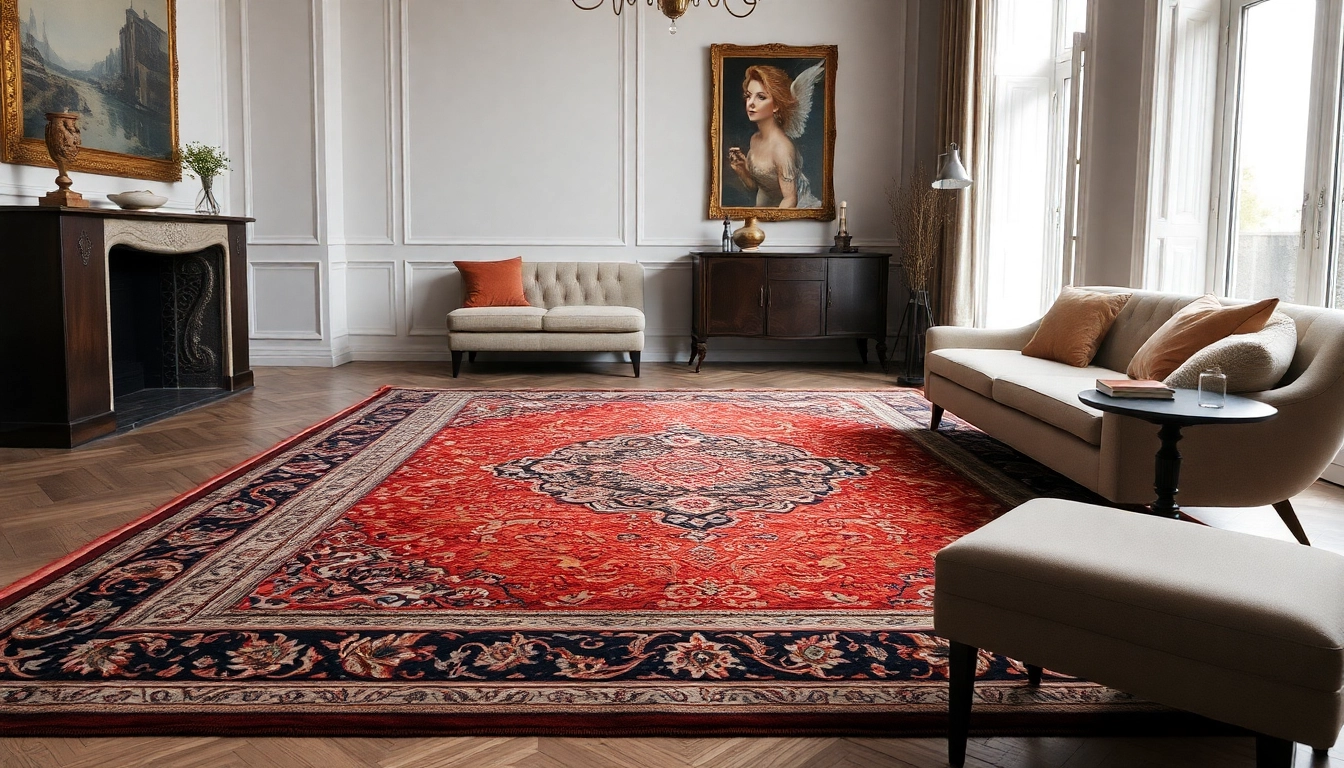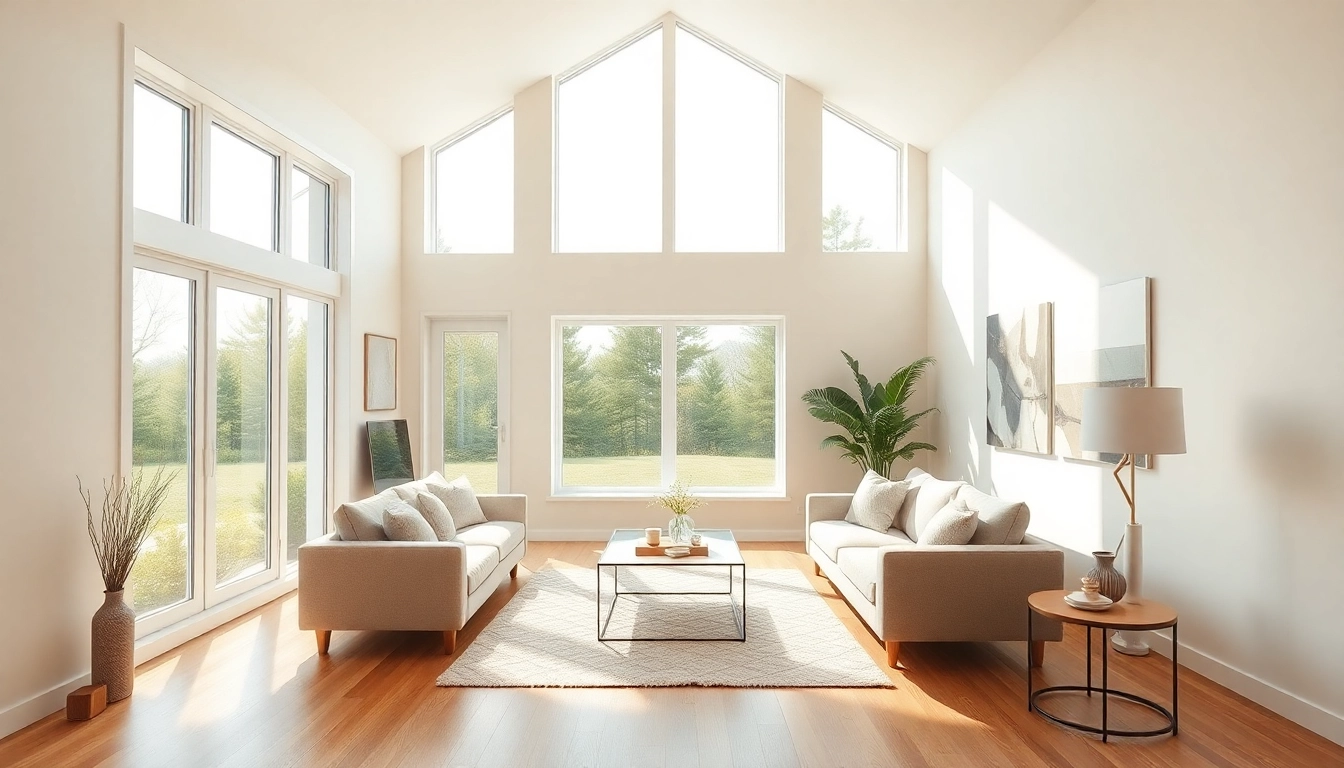Introduction to Tappeto Persiano Milano
Milano, renowned as Italy’s design and fashion capital, also boasts a rich heritage of appreciating timeless artistry through authentic Persian rugs. Among the city’s diverse interior decor options, Tappeto persiano Milano stands out as an emblem of luxury, craftsmanship, and cultural elegance. These meticulously handcrafted rugs, with their intricate patterns and vibrant colors, have transcended mere floor coverings to become statement pieces that elevate any space. The historical connection between Milan and Persian artistry dates back centuries, blending Middle Eastern elegance with Western sophistication. Today, connoisseurs and interior enthusiasts seek genuine Persian rugs not only for their beauty but also for their cultural symbolism, durability, and investment value. This comprehensive guide explores the significance, features, shopping tips, and ways to incorporate these exquisite pieces into modern Milanese interiors, ensuring you make an informed and stylish choice in your home or office decor.
Historical Significance of Persian Rugs in Milan
Milan’s long-standing reputation as a hub for art, fashion, and luxury has fostered a deep appreciation for handcrafted textiles, including Persian rugs. Historically, Persian carpets have been prized symbols of wealth and refinement, favored by aristocrats and collectors across Europe. During the Renaissance and subsequent centuries, trade routes and diplomatic exchanges introduced authentic Persian textiles to Milanese nobility, who recognized their exquisite craftsmanship and cultural richness. The city’s aristocratic palaces, boutiques, and art salons often displayed these luxurious pieces as status symbols.
In the modern era, Milanese interior design continues to honor this heritage by integrating authentic Persian rugs into contemporary settings. This cultural continuity establishes a unique blend of old-world craftsmanship with modern sophistication. Today, the demand for genuine Persian rugs in Milan not only reflects a penchant for luxury but also an appreciation for traditional artistry that has persisted through centuries. This context makes Milan an ideal city for sourcing, restoring, and showcasing Persian rugs that embody both historical significance and modern elegance.
Modern Trends in Persian Rug Design
The world of Persian rugs is dynamic, continuously evolving to meet contemporary aesthetic preferences without losing its original charm. Modern trends emphasize a fusion of traditional motifs with minimalist design, creating versatile pieces suited to modern Milanese homes and commercial spaces. For instance, geometric patterns inspired by Tabriz or Nain carpets are popular for their clean lines and symmetry, aligning seamlessly with modern decor styles.
Color palettes have also shifted—while classic Persian rugs feature deep reds, indigos, and golds, today’s designs often incorporate softer neutrals, pastels, or even monochromatic schemes to match eclectic, Scandinavian, or industrial interiors. Innovations such as larger medallions in bold contrasts or subtle, understated motifs appeal to contemporary tastes while respecting traditional craftsmanship. Additionally, some designers are experimenting with limited-edition collaborations combining Persian knotting techniques with modern art or branding, creating bespoke pieces that are both functional and collectible.
Why Choose a Tappeto Persiano in Milan Today
Choosing a genuine Persian rug in Milan today offers numerous benefits beyond mere aesthetics. First, their rich cultural symbolism imbues interiors with a sense of history and artistry that few modern manufacturing products can match. They serve as conversation starters, embodying centuries of craftsmanship passed down through generations.
Moreover, Persian rugs are renowned for their durability and ability to age gracefully. When properly maintained, they can last for centuries, often becoming heirlooms passed through family generations. Investing in an authentic piece also supports fair-trade artisans and preserves traditional techniques that are increasingly rare in today’s fast-paced, mass-produced market.
Finally, in Milano’s competitive luxury market, a well-chosen Persian rug elevates the overall ambience of a space, adding warmth, color, and texture that complement sophisticated interior designs. Whether for a grand living room, a boutique hotel, or a corporate office, a Tappeto Persiano remains an enduring mark of elegance and cultural appreciation.
Key Features and Quality of Persian Rugs
Handmade Craftsmanship and Material Quality
At the heart of every authentic Persian rug is meticulous craftsmanship. These rugs are often handmade by skilled artisans using traditional knotting techniques — such as the symmetrical (Persian) knot — that ensure durability and detailed patterning. High-quality materials, including natural wool, silk, and cotton, are carefully selected to enhance longevity and visual appeal.
Premium rugs from established centers like Tabriz, Isfahan, or Qom typically involve extensive labor, with some pieces taking months to complete. The fine wool used offers softness and resilience, while silk adds a luminous sheen that signifies luxury and finesse. Modern advancements in dyeing have allowed artisans to achieve vibrant, colorfast dyes derived from natural sources, maintaining both aesthetic appeal and environmental integrity.
Patterns, Colors, and Cultural Symbolism
Persian rugs are renowned for their intricate designs, often laden with symbolic motifs ranging from floral and animal themes to geometric patterns signifying protection, fertility, or spirituality. The central medallion, corner designs, and border motifs reflect regional identities and cultural stories, making each rug unique.
Color schemes vary, but traditional palettes favor rich reds, deep blues, ivory backgrounds, and gold accents. These colors are derived from natural dyes sourced from plants, minerals, and insects, contributing both to the rugs’ vibrancy and their cultural authenticity. Modern collectors often seek rugs that preserve these traditional motifs or reinterpret them in contemporary ways to suit global design aesthetics.
Durability and Maintenance Tips for Longevity
One of the reasons Persian rugs are prized is their durability. Their dense knots and quality materials ensure resilience against wear and tear. To maintain their beauty over time, proper care is essential. Routine vacuuming without harsh brushes prevents dirt accumulation, while periodic professional cleaning preserves fibers and colors. Avoid placing rugs directly in sunlight to prevent fading. Use rug pads to prevent slipping and reduce friction.
In case of spills or stains, immediate blotting with a soft cloth and mild detergent minimizes damage. For significant repairs or restoration, consulting experienced specialists in Milan ensures authenticity and preserves the rug’s integrity.
Shopping Guides for Tappeto Persiano Milano
Where to Buy Authentic Persian Rugs in Milan
Milan hosts a range of reputable stores, galleries, and artisans dedicated to authentic Persian craftsmanship. Notable locations include specialized boutiques like Toranj and outlets such as Artorient Milano, which offer authentic, hand-knotted Persian rugs. Visiting these curated showrooms allows customers to examine the craftsmanship, verify authenticity, and learn about the regional origins of each piece.
Additionally, Milanese expos, auctions, and vintage markets often feature antique and rare Persian rugs, providing options for collectors and connoisseurs seeking unique items. Ensuring authenticity involves checking for precise knot density, natural dyes, and certifications from trusted dealers.
What to Consider When Selecting a Rug
Key factors include size, design, regional origin, and intended use. For large living rooms or grand entrance halls, bigger rugs with bold motifs are impactful, while smaller pieces suit dining areas or bedrooms. Consider the overall interior style—traditional, contemporary, or eclectic—and choose motifs and colors that harmonize with existing decor.
Authenticity verification involves inspecting the knotting technique, dye sources, and craftsmanship quality. Price often correlates with the region of origin, knot density, materials, and antique value. Always seek expert advice or purchase from reputable sources to ensure fair value.
Pricing and Value for High-Quality Persian Rugs
The cost of a genuine Persian rug varies widely, typically from €200 for smaller, machine-made pieces to over €5,000 for antique, handcrafted masterpieces. Mid-tier, high-quality handmade rugs in Milan can range between €1,000 and €3,000 depending on factors like size and complexity. Evaluating the value involves considering craftsmanship, rarity, and historical significance. Proper maintenance can preserve and even enhance a rug’s value over time.
Restoration, Customization, and Care
Professional Repair and Restoration Services in Milan
Milan boasts expert artisans specializing in restoring and repairing Persian rugs. These professionals use traditional techniques to fix tears, reweave damaged areas, and refresh faded colors, extending the life of your investment. Restorations are delicate processes—advise selecting certified specialists who understand the cultural and technical nuances of Persian textiles.
Regular restoration processes include dye retouching, knot renewal, and pest treatment, ensuring your rug remains an enduring symbol of elegance.
Custom Design Options for Personalized Rugs
Many Milan-based artisans and ateliers offer bespoke services, allowing clients to create entirely personalized Persian rugs. This includes choosing motifs, colors, sizes, and even incorporating personal symbols or family crests. Customization ensures your rug complements your interior style perfectly and becomes a unique, meaningful piece.
Collaborating with craftspeople ensures adherence to traditional weaving techniques while achieving modern aesthetic goals, resulting in timeless yet personalized decor elements.
Storage and Cleaning Best Practices
Proper storage involves keeping rugs in a dry, cool environment away from direct sunlight, pests, and excessive humidity. Rolling the rug with the pile inward prevents damage, and wrapping it in breathable fabric or paper preserves natural fibers. Regular professional cleaning, ideally annually, maintains color vibrancy and fiber integrity. Avoid DIY cleaning agents that can damage dyes or fibers, and always consult specialists for deep cleaning or repairs.
Enhancing Your Space with a Persian Rug
Styling Tips for Different Interiors
Integrating a Persian rug into your decor involves balancing statement presence with subtlety. In minimalist interiors, a richly patterned rug can serve as a focal point to introduce color and texture. For contemporary spaces, select rugs with geometric motifs or muted palettes to harmonize with sleek furniture. Traditional interiors benefit from classic medallions and ornate borders, complemented by antique furnishings.
Layering rugs, pairing with modern art pieces, and mixing textures creates dynamic, inviting atmospheres. Positioning the rug under key furniture pieces anchors the design, providing warmth and visual coherence.
Case Studies of Elegant Milanese Homes
One example is a downtown Milan apartment where a large, crimson Tabriz rug anchors a living area furnished with modern minimalist furniture, blending tradition with contemporary design. In another case, an elegant villa features a silk Qom rug paired with antique wooden furnishings, showcasing a seamless curation of cultural artistry and luxury.
These examples demonstrate the versatility of Persian rugs, adapting to various stylistic paradigms while adding depth and character to spaces.
Benefits of Adding Authentic Persian Decor
Beyond aesthetics, authentic Persian rugs foster a sense of cultural storytelling, craftsmanship appreciation, and investment security. They increase property value, attract discerning buyers or tenants, and serve as heirlooms retaining or appreciating in worth over time.
Incorporating these rugs elevates interiors, encapsulating a blend of history, artistry, and personal expression—all in one remarkable piece.




